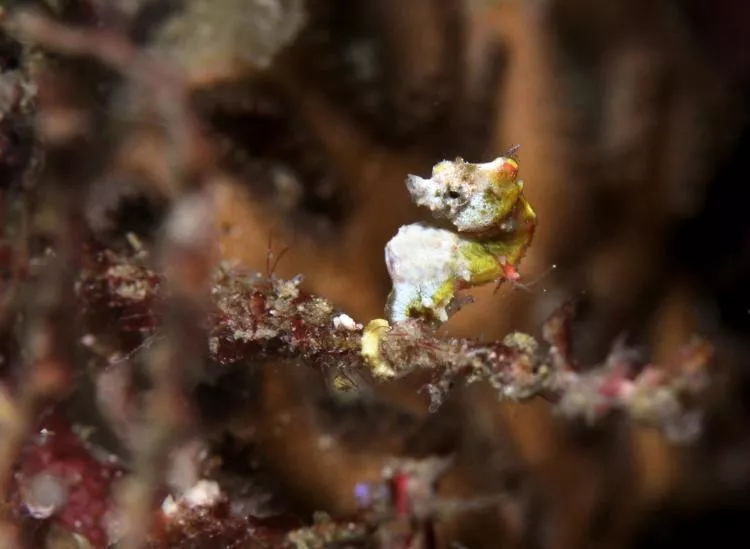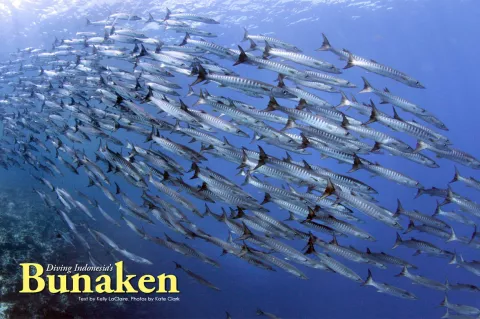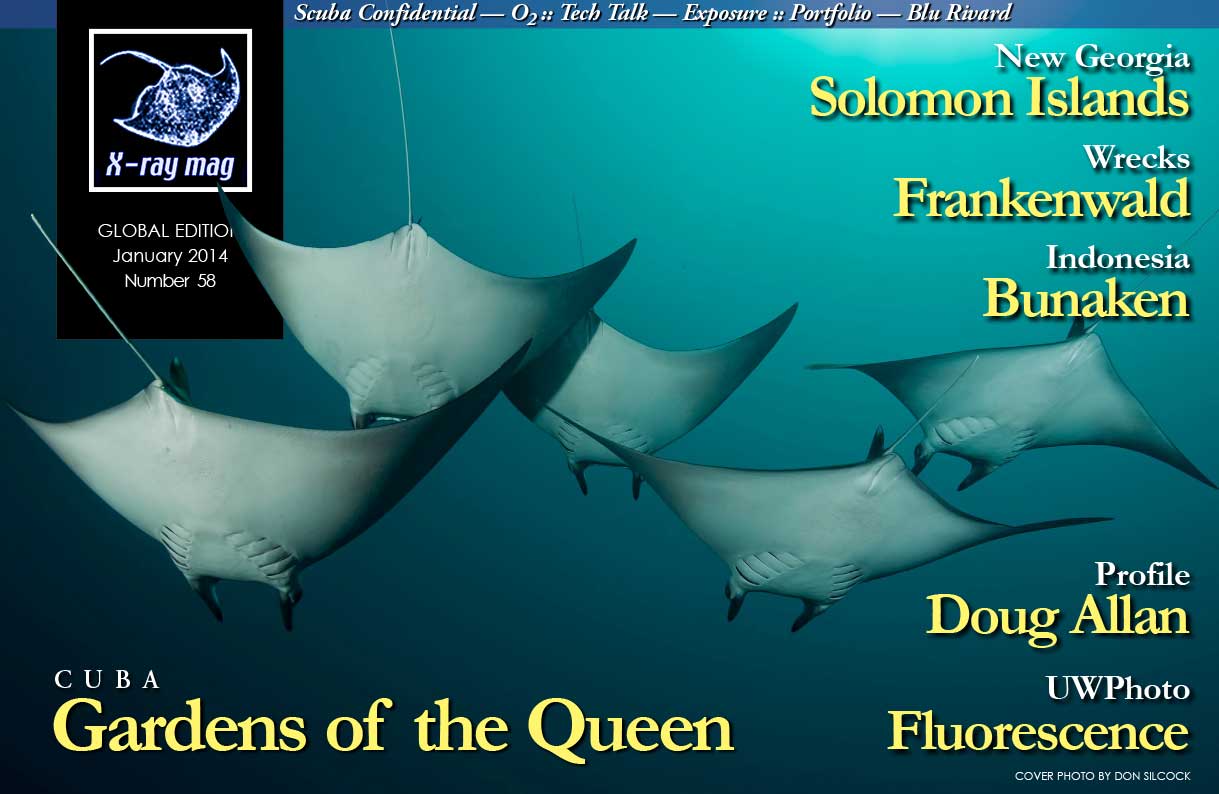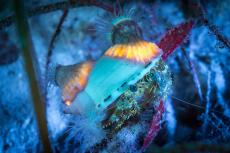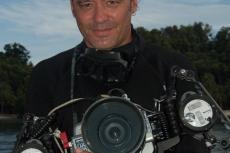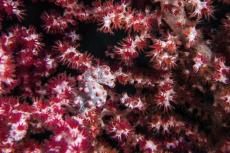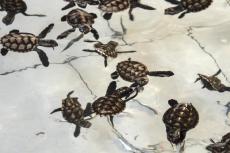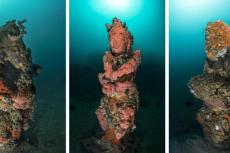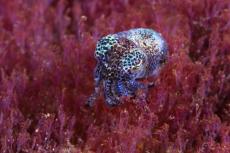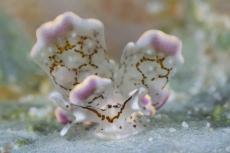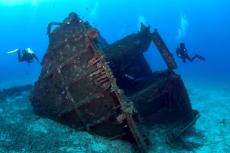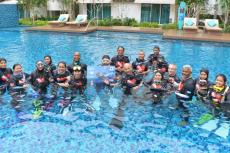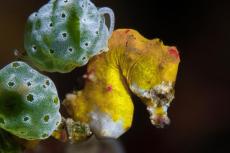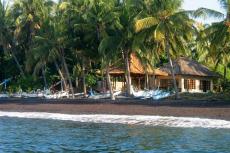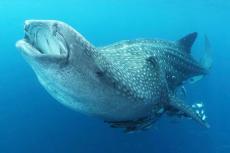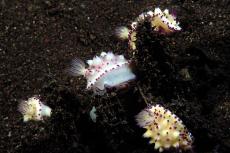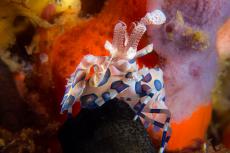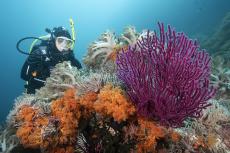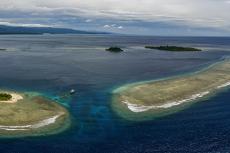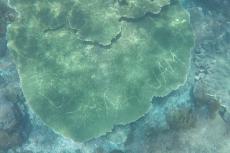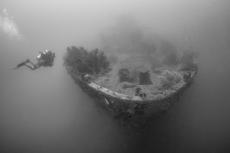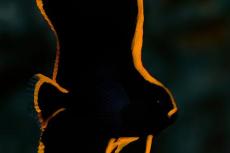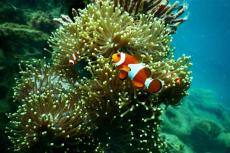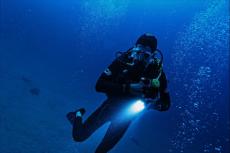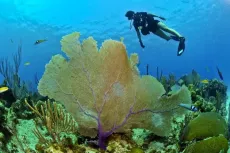We’re swimming fast. Too fast for my liking. I’m taking heaving gulps, and I know my tank won’t last very long if we don’t slow down soon. Just as I’m about to stop and risk losing my group, we hear a rapid series of bangs coming from our dive boat in the distance. Our guide, a lithe Indonesian with pistons for legs and bottomless iron lungs, points into the blue and somehow quickens his pace.
Contributed by
A few meters ahead to my left, my cousin, Kate Clark, an accomplished diver and tireless swimmer, senses my fatigue and looks back to make sure I haven’t quit on her. She slows her speed a bit, trying to be a good buddy and stick with me. The girl is wearing snorkel fins and carrying a 40 pound camera for Pete’s sake, I think to myself. How is she swimming so fast?
Kate has me check my gauge, and I groan silently as I see I’ve already used a third of my air. We’ve only been in the water ten minutes. She smiles patiently and points to her own gauge (which, of course, is still full) and then to her octopus—”You can always take a few sips off mine if you need it,” her eyes say.
More banging, frantic now and louder than ever; the crew has found what they were looking for. Kate beckons me to push on, and I begin kicking with renewed vigor, knowing our prize is just ahead. After another few minutes of hard swimming, I check my pressure gauge once more—the tank is half empty. My heart is pounding audibly, and I can no longer hear the banging from the boat. My legs are throbbing, and I consider surfacing and giving up.
I look up to signal Kate and see her pointing frantically ahead towards the sheer drop off of the giant wall to our right.
Look! Look!
I shift my gaze and see them. Everything changes.
Volcanic cliffs
Two days earlier, our little boat drifted into a small inlet surrounded by the lush mangroves and the white sands of Bunaken. A tall, slight woman stood at the water’s edge and waved us in while two dogs danced at her feet, wagging their tails energetically. Tina Melson, co-owner of Two Fish Dive Resort with Nigel Thomas, served hot tea and cookies while giving us a brief history of the island, as the boat crews and dive masters took our gear to our cabin.
Bunaken National Marine Park covers nearly 900 square kilometers of ocean ecosystem and was established in 1991. The park is dominated by the rising crest of Manado Tau, a cone shaped peak that reaches 600 meters above sea level. From almost anywhere inside the park’s boundaries you can see its lush slopes of coconut palms gathering pillows of clouds throughout the day. The dive sites around the inactive volcano feature some of the steepest, most dramatic walls in the area and are absolutely packed with life.
“The underwater landscapes around Bunaken are breathtaking,” Tina told us. “There is so much diversity of marine life here—hard and soft corals, reef fish, invertebrates, pelagics, turtles and so on—that each dive offers something new and exciting for any certification level.” She paused a moment before smiling, “You’re really going to love it here.”
She was right. The first two days, as Tina promised, were spectacular. The giant walls of the park’s volcanic islands are absolutely monolithic, dropping hundreds of meters, and home to more turtles than any one area I have ever encountered. In the first several dives, we saw over a dozen hawksbill sea turtles and several massive “greens” that were easily six feet long and as big as Smart Cars.
One friendly and curious green sea turtle took more than a passing interest in Kate’s camera and spent several moments following her around, inspecting the domed housing with its mouth agape and its eyes wide with wonder. In some areas, they were so ubiquitous that soon (and I cringe at having to admit this) I was actually beginning to pass them by without a second glance.
Banded sea snakes and leery morays are also extremely common in the nooks and crannies of the rocky outcroppings—the small caverns and deep cracks in the granite making excellent hunting grounds. Large numbers of blue spotted stingrays make the sandy coral breaks along the sheer cliffs their home as well, but they are rather shy and divers need to keep their cameras at the ready if they want a chance at capturing a good image.
Each underwater precipice here is literally swarming with pyramid butterflyfish and feisty red toothed triggers that you can actually hear chomping their teeth, as they charge your mask and regulator valve. The triggers aren’t the only species fierce about protecting their territory, however. Anemone fish can be downright belligerent, rushing your mask and slapping your ears with their tails if you spend too long peering into their habitat.
Large schools of silver jacks also whirl and dance along the sheer drop-offs and white tip sharks can usually be found cruising the walls as well. Unfortunately, a long, hot Indonesian spring had pushed the water temperatures to nearly 82°F, and the sharks had sought cooler waters in the depths below. Bunaken also boasts the occasional whale shark sighting.
Unexpected macro
To be sure, most dives in Bunaken are wall dives, and the volcanic crags are absolutely covered with large corals and colorful fish, but that’s not all the protected group of islands has to offer.
On our third day, Kate asked our guide, John Kanoneng, if there were any good spots for macro. John just smiled and said in his thick accent, “Any dive is good for the small lens. You bring macro, I show you.” And he did, (...)

